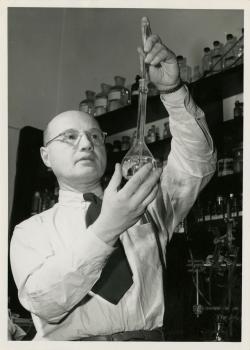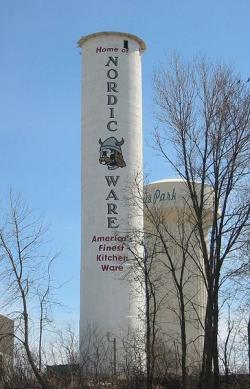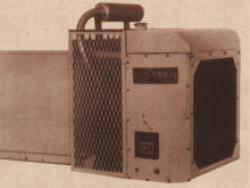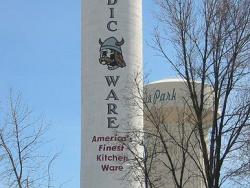The object of the Red Wing project was "To determine the optimum economic uses of electricity in agriculture and to study the value of electricity in improved living conditions on the farm." Although not the first service to farms in the U.S., it was likely the first built as an experiment specifically for collecting and publishing engineering and economic data.
MN


Charles C. Fenno Of Grinnell, Ia, Patented The First Field Corn Silage Harvester On April 19, 1892. His Ground-Powered Machine Cut The Corn Plant And Fed The Tassel End First To A Rotary Cutter. Joseph Weigel Of Flandreau, Sd, Improved Fenno's Harvester In 1912 By Adding An Engine To Power The Cutter And By Feeding The Stalks Butt End First. Andrean And Adolph Ronning, Farmers Of Boyd, Mn Patented Further Improvements In 1915. In 1918 The American Harvester Co. Of Minneapolis, Mn, Began Manufacturing The Horse-Drawn Ronning Harvester Using Weigel's Patent Too.

Izaak Maurits Kolthoff (1894–1993) has been described as the father of modern analytical chemistry for his research and teaching that transformed the ways by which scientists separate, identify, and quantify chemical substances. Once a collection of empirical recipes and prescriptions, the field of analytical chemistry is today an essential branch of chemistry built upon solid theoretical principles and experimental techniques, the basis of which was formed over the course of Kolthoff’s nearly 80-year career.

The oldest surviving rotary snowplow in the world
M

Designed by William A. Truesdell, a railroad engineer, the Seventh Street Improvement Arches celebrates the engineering application of mathematics to improve living conditions.

No image dominates the Midwestern landscape like the monolithic grain elevator, whose present shape and construction owe much to grain company operator Frank Peavy and architect-builder Charles Haglin.
Wanting to improve on the flammability and cost of traditional wood-cribbed construction, Peavy speculated that reinforced concrete, in its infancy at the turn of the century, would outperform other materials. But critics feared that the elevator would collapse due to the vacuum created when grain was emptied from the air-tight structure.

The refrigeration units placed on trucks in 1938 by Thermo King Corp. revolutionized the transportation of perishable foods. Today they are a common sight on streets everywhere. Consumer demand for meat, poultry, produce and dairy products increased at an astounding rate. These installations and subsequent ones on refrigerated vehicles, ships, and railroads have had worldwide impact on the preservation of food and other perishables during distribution.

The refrigeration units placed on trucks in 1938 by Thermo King Corp. revolutionized the transportation of perishable foods. Today they are a common sight on streets everywhere. Consumer demand for meat, poultry, produce and dairy products increased at an astounding rate. These installations and…
Read More
No image dominates the Midwestern landscape like the monolithic grain elevator, whose present shape and construction owe much to grain company operator Frank Peavy and architect-builder Charles Haglin.
Wanting to improve on the flammability and cost of traditional wood-cribbed…
Read More
Designed by William A. Truesdell, a railroad engineer, the Seventh Street Improvement Arches celebrates the engineering application of mathematics to improve living conditions.
The construction of these arches presented a number of challenges. Since Seventh Street intersected the St.…
Read More
Izaak Maurits Kolthoff (1894–1993) has been described as the father of modern analytical chemistry for his research and teaching that transformed the ways by which scientists separate, identify, and quantify chemical substances. Once a collection of empirical recipes and prescriptions, the field…
Read More
Charles C. Fenno Of Grinnell, Ia, Patented The First Field Corn Silage Harvester On April 19, 1892. His Ground-Powered Machine Cut The Corn Plant And Fed The Tassel End First To A Rotary Cutter. Joseph Weigel Of Flandreau, Sd, Improved Fenno's Harvester In 1912 By Adding An Engine To…
Read More
The object of the Red Wing project was "To determine the optimum economic uses of electricity in agriculture and to study the value of electricity in improved living conditions on the farm." Although not the first service to farms in the U.S., it was likely the first built as an…
Read More


